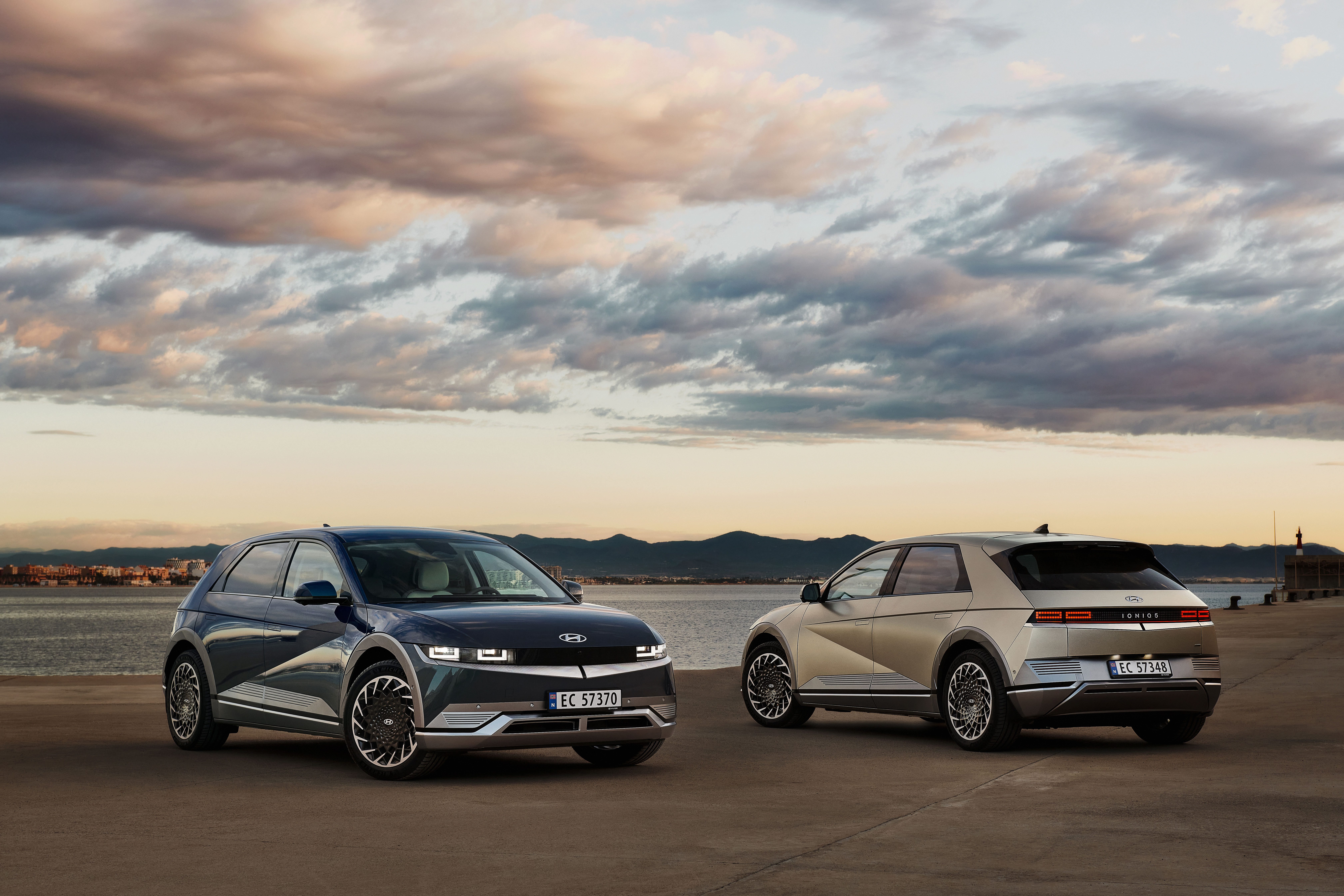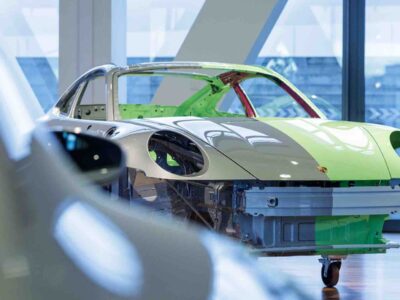The Hyundai Ioniq 5 is one of those rare examples of the trends of a brand new industry being completely avoided and even shunned to create a car that is as distinctive and interesting as anything else that came before it. What’s more, the EV industry now seems to think so too. At the World Car Awards in New York last month, a panel of 102 jurors bestowed three of the night’s six big awards to the automaker’s brilliant compact crossover, including awards for best design and the overall Car of the Year award, It’s clear why.
Hyundai designed a car full of complex geometric patterns and retro design elements. Overall, the car’s shape takes after the designs of 80s rally cars, with the sloping sportiness contrasting with the sharp origami-like angles present across almost the entire vehicle. The wheel design follows a hypnotic sunflower-fractal pattern that blends seamlessly with the car’s exacting folds. The video-game-inspired pixelation of the front and rear lights is a motif repeated throughout the vehicle as an example of the Ioniq 5 playful design.
Walkaround | 2022 IONIQ 5 | Hyundai
The interior, by contrast, is spacious and understated, yet very techy. The main attraction is the pearly white continuous screen that reaches from the dashboard position of the driver’s side to the car’s center. It’s a touchscreen, but Hyundai also added a series of knobs and buttons for volume control and access to maps, media, and other applications. In addition, the driver’s side includes a heads-up display that shows a variety of critical driving features, including speed, drive mode, blind spots, and directions, which add an element of luxury that most cars at that price point just don’t have.
Despite the smallish size of the car, the seating arrangement is incredibly spacious due to its completely flat floor. The compact crossover seats five adults comfortably, with enough room for 27 cubic feet of cargo space, transforming into 59 cubic feet with the seats folded down. The one mark against the car is the almost complete lack of front trunk space with little more than a small cubby for storage.
The car’s safety features are focused on driver assistance. The car’s blind spot assistance, adaptive cruise control features, and collision avoidance and alert systems are uploaded right into the driver’s heads-up display.
With prices starting at $41,195 for the RWD version and $48,395, the Ioniq is priced competitively.
The Ioniq’s driving specs offer an RWD and an AWD powertrain. The extended range RWD features an engine output of 225 horsepower and 258 lb-ft of torque which Hyundai says does 0-60mph in 7.4 seconds. The output is better in the AWD, topping out at 320 horsepower. The battery range is also impressive, with the AWD reaching 256 miles of range and the RWD eking out 303 miles. The car’s regenerative braking system achieves one-pedal braking in its most aggressive setting. If that’s not enough, the Ioniq 5’s 800V battery architecture recharges from 10% to 80% in just 18 minutes at a DC fast charger.
As the industry continues to set standards for what an electric car is supposed to look like, design studios across the world will continue to work to redefine the EV. What came out of the studios at Hyundai is a breath of fresh air. It’s a strong example of an automotive design team creating a distinct look for a vehicle that will hopefully inform the future of the brand.





